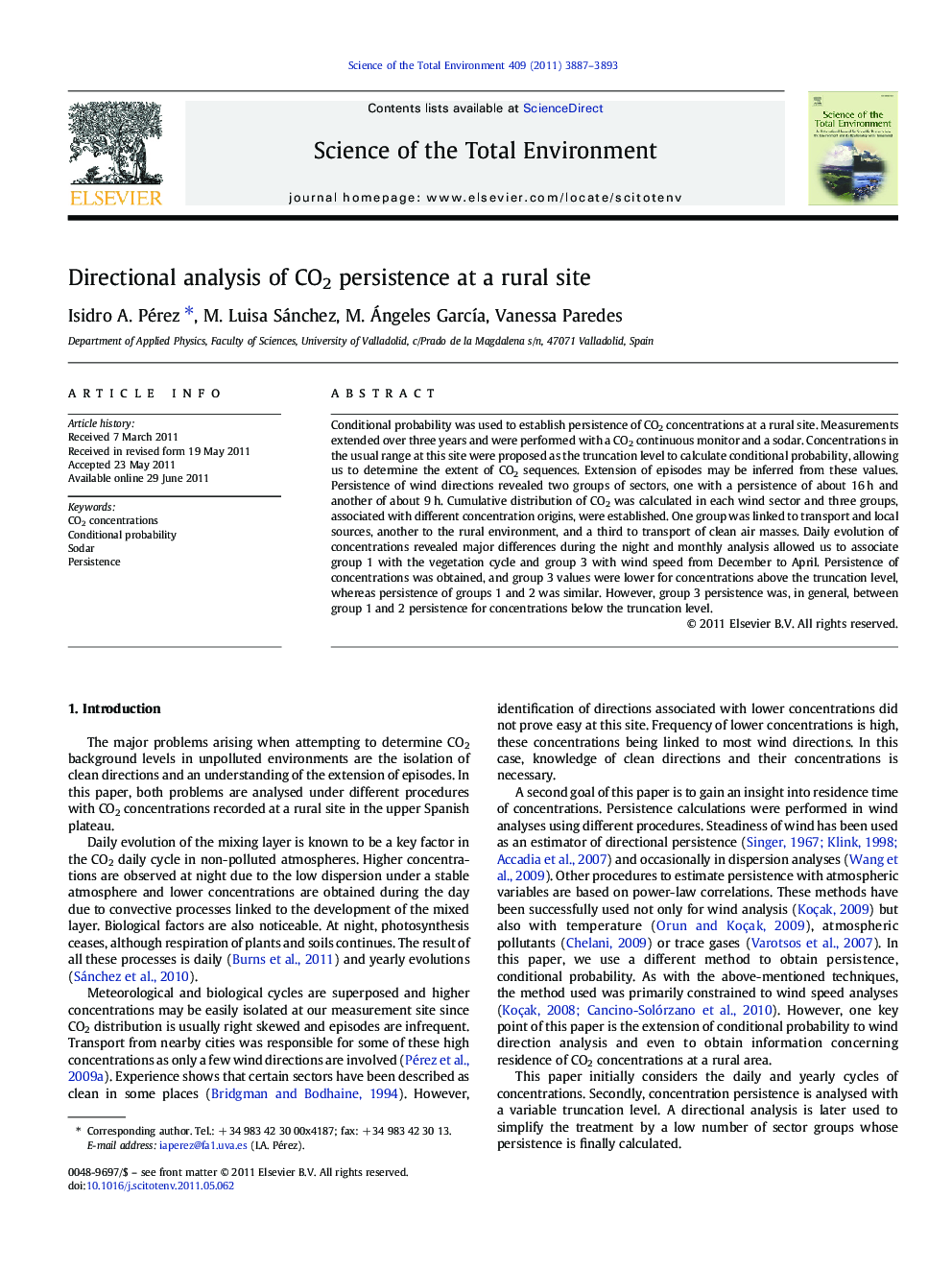| Article ID | Journal | Published Year | Pages | File Type |
|---|---|---|---|---|
| 4430044 | Science of The Total Environment | 2011 | 7 Pages |
Conditional probability was used to establish persistence of CO2 concentrations at a rural site. Measurements extended over three years and were performed with a CO2 continuous monitor and a sodar. Concentrations in the usual range at this site were proposed as the truncation level to calculate conditional probability, allowing us to determine the extent of CO2 sequences. Extension of episodes may be inferred from these values. Persistence of wind directions revealed two groups of sectors, one with a persistence of about 16 h and another of about 9 h. Cumulative distribution of CO2 was calculated in each wind sector and three groups, associated with different concentration origins, were established. One group was linked to transport and local sources, another to the rural environment, and a third to transport of clean air masses. Daily evolution of concentrations revealed major differences during the night and monthly analysis allowed us to associate group 1 with the vegetation cycle and group 3 with wind speed from December to April. Persistence of concentrations was obtained, and group 3 values were lower for concentrations above the truncation level, whereas persistence of groups 1 and 2 was similar. However, group 3 persistence was, in general, between group 1 and 2 persistence for concentrations below the truncation level.
► CO2 persistence was calculated by means of conditional probability analysis. ► Clean sectors were identified through directional analysis of cumulative probability. ► Three groups of sectors were established following concentration origin, and CO2 persistence was calculated in each group.
